In the series on how to build an eCommerce website from scratch, finding a niche and choosing website templates are the first few important steps towards it. 99% of merchants open online stores with a dream of being successful eCommerce entrepreneurs. However, most of them fail to make it valid for many reasons. One of those reasons is taking the wrong niche. I understand how tough it is to find an eCommerce niche, especially when the results all over the internet talk about the same boring theoretical stuff like going with your passion, resolving the pain points, looking for the communities, exploring google suggestions, and so on.
All the above points mentioned are fine to understand, but how to determine which would be the profitable niche for your business?
While brainstorming the eCommerce niches, you should consider some essential factors that can help you build a renowned brand and prevent business failure.
- 1. Trending niche
- 2. High-Profit Margins
- 3. Less Competition
- 4. Product’s Sustainability
- 5. Best for Repeat Sales
- 6. Hassle-free Order Fulfillment
- 7. Low Government Intervention
- 8. USP and valuable takeaways
- 9. Best for Business Scalability
- 10. Marketable Products
- 11. Niche based on cross-device selling
- 12. Understanding the total market share and probability of its growth
- 13. Low susceptibility to the big blows like pandemic
- 14. Using sales cycle to determine the niche
- 15. Flexibility of the niche
- 16. Pen or stylus
- Step 1: Niche down the general into specifics
- Step 2: Study the Niche Market Demand
- Step 3: Talk to real people
- Step 4: Know your audience
- Step 5: Run a test campaign
- Quick Recap!
Here are the things to consider when selecting an eCommerce niche:
1. Trending niche
Selling trending products help you keep your sales graph up from the beginning.
Now the question arises of how to find the trending niche market. There are many ways you can consider. Here’s the one I would recommend.
Finding Trending Products
First, set the location and go to the “Today’s Deal” section.

You can also check the sections that show popular items by category.

This is not a one-day process. You must spy on it every two days to check which product categories are trending and common. This way, I am sure you will successfully find your eCommerce niche.
I trust Amazon [1] because I consider it the top eCommerce store I can learn from. Similarly, you can find trending or popular products if you trust any eCommerce store best for your niche eCommerce business.
2. High-Profit Margins
Raise your hand if you want to become a billionaire. If this is your ultimate goal behind creating an eCommerce store, then here’s what you can start with.

You need to take a profitable niche for your online business that offers products with a higher profit margin.
You may be thinking about how anyone can know the products’ profit margins before connecting multiple suppliers and getting quotations from them. And how can you contact the suppliers when you are unsure which niche or products you want to go with?
That’s, again, a time-consuming process. Don’t worry; you will find the solution below:
Finding High-profit Margin Products
Many online marketplaces sell products in bulk or wholesale, like Alibaba.com [2]. And the solution is to check the wholesale price of the products online.
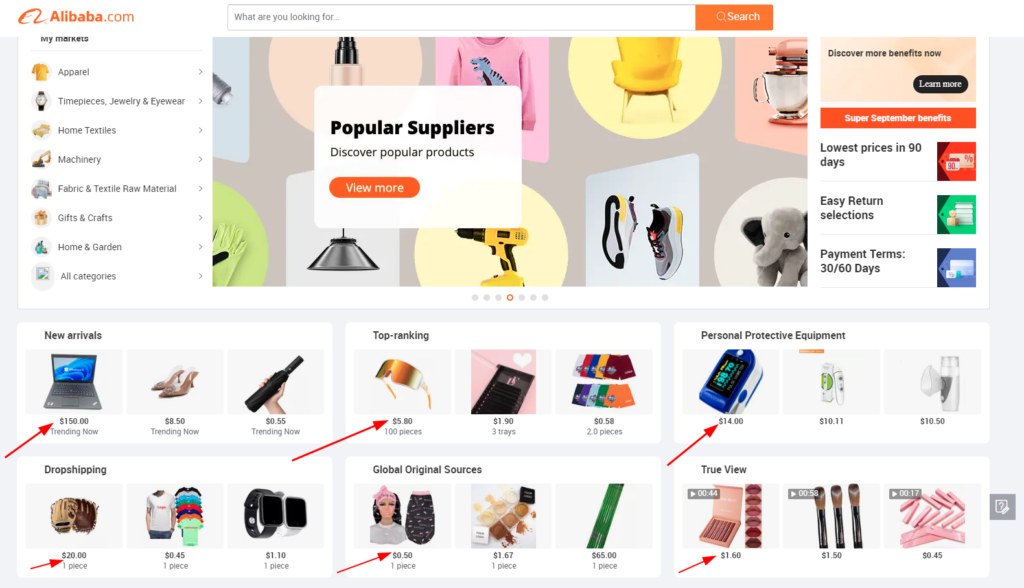
Here you can see the wholesale product price of the products. Now, you can compare the product’s wholesale price with its retail price on different platforms (also consider Google shopping).
Next, you can select the profitable eCommerce niches that offer products that offer higher margins. With this, you can also connect with suitable suppliers for future trading.
3. Less Competition
Selling niche products becomes more profitable with lower niche competitors.
You would get a total share of the revenue when selling unique products in a specialized market where there is no one to compete with. This is getting a competitive advantage for your eCommerce business.

For this, you can drill down the broad niches to find a micro niche market with a dedicated audience willing to pay for your products. This way, you can eliminate a large number of competitors.
For example, toys or games for kids are a broad niche, so you can take a specific niche market like eco-friendly toys, wooden toys, rental toys, etc., which helps you create a vast difference between your brand and other eCommerce businesses.
Before you step down into the real world, you should get a clear picture of the market and competition. For that, you need a detailed competitive analysis [3]. You can start this by finding the top 5-10 competitors. Simply search your niche or products on the web and pick the eCommerce websites that come first in the search result.
Next comes preparing a comparison table of your competitors. And I have a useful Competitor Analysis Template for you where you can fill in data about your competitors, such as:
- Competitor description
- Targeted audience
- Product offering
- Feature comparison
- Marketing strategies
- SWOT analysis
- Competitive advantage
You can do this for every niche in your list and find out a better market for your eCommerce business.
4. Product’s Sustainability
While you’re selecting the eCommerce niche, it’s important you determine the product’s sustainability. By sustainability, I mean— how much the product match the interest and beliefs of the people. Can people associate these products with their set of principles, beliefs, or even opinions?
And if you observe the behavior on a collective level, you can finalize the niche quite easily. For example. Vegans expect vegan products. It’s a market driven by beliefs and ideologies. Ask yourself: Is your target market moving towards veganism? How’s the hegemony behaving? Can you figure out how enthusiastic people feel about it? If yes, that’s one step closer to choosing your niche.

Now to determine product sustainability based on interest and behavior, you can deploy a couple of quick tricks.
1) Presence of mind
I know the presence of mind is not the best way to determine a product’s sustainability, but it’s the bare minimum you need to start with finding it. I will tell you why. TVs, social media, search engines, radios, etc. actively cover what people associate and disassociate themselves with, whether they’re polarized towards any set of ideas and beliefs. If you pay a little attention to it, you can at least find a direction to move. Once you’re done with this, you can create market surveys to confirm it.
2) Market research
Use survey apps like Survey Monkey or Survey Sparrow to determine what’s it that people strongly hold on to. For cheaper alternatives, you can use Google docs to build your survey. Create questionnaires that help you dive deeper into how the audience interacts with the target location in general. (Put a small template of questions)
5. Best for Repeat Sales
Products that bring repeat sales are always a better choice. It’s because it helps you create a loyal customer base for your business. And convincing an existing customer to repurchase is easier than convincing a new customer every time for sales and revenue growth. Therefore, this is an important factor you can consider before selecting an eCommerce niche.
You can also categorize the products based on their consumption. For example, you can either sell a digital thermometer that is a one-time purchase product, or you can sell vitamin tablets in monthly subscription boxes. Here, the Vitamin tablets promise more sales than the digital thermometer.
How to find repeated selling products?
1) Find convenience products: There are four main types of consumer products [4], and one of them is “Convenience products.” These products are highly brought and easily accessible.
2) Use your analytical powers: Well, you can easily identify whether the product is commonly consumed or not by using your analytical powers.
3) Explore eCommerce stores: You can explore the frequently brought products on popular eCommerce stores like Amazon and Walmart to find the highly consumed products.
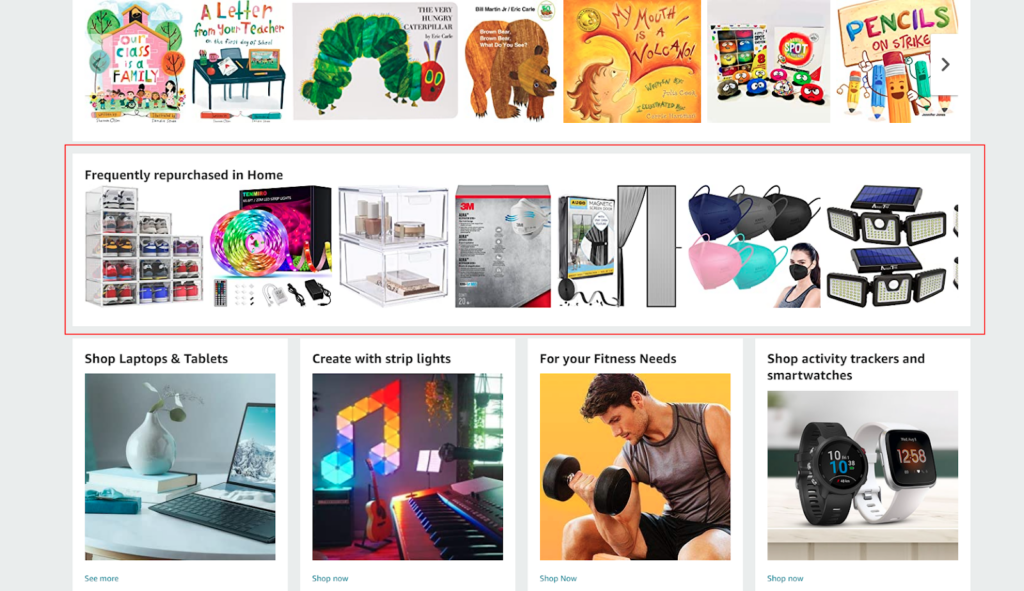
6. Hassle-free Order Fulfillment
The success of an eCommerce store depends on many factors. Order fulfillment is one of them. Selling unique products seem exciting but when you don’t have enough fulfillment centers for order delivery, it can be a great risk to your niche business.
To avoid this risk you need to find products that are easy to source and deliver to your customers. Therefore, before finalizing any niche, make sure you have a clear idea of how to process the order.
You can start with the order fulfillment model! Here, you need to choose the type of order fulfillment for your eCommerce business from in-house production, outsourcing, dropshipping, and hybrid.

1) In-house Production
When you’re manufacturing your products by yourself, you don’t have to rely on suppliers for fulfillment. You can have control over product quality and inventory.
2) Outsourcing
You can outsource your niche products from third-party vendors or let them manage the complete order fulfillment process.
3) Dropshipping
This is the most popular amongst the new eCommerce store owners. Most small businesses that don’t want to have the headache of product manufacturing, inventory management, and order fulfillment, prefer this model. The manufacturer fulfills and ships the order to the customer directly based on the orders received by the online store.
4) Hybrid
Here, you use multiple models for order processing. For example, you may keep an inventory of specific products, and other products you may outsource from other suppliers or manufacturers.
Merchants usually avoid production and inventory management, due to which they need to compromise the product quality or shipment time. Therefore, you should consider this factor before you finalize your niche ideas.
7. Low Government Intervention
Every country has its own laws and regulations for production, trading, import-export, and more. Even there are some products that require special licensing and other legal formalities. If you are targeting different countries, it becomes crucial to understand their laws or restrictions regarding the sale and usage of the product.
For example, selling, importing, exporting, distributing, transporting, or manufacturing products containing dog or cat fur is illegal in the United States. For manufacturing or selling alcoholic products, merchants should have appropriate licenses.
When you’re selecting any eCommerce niche, you should go with the products that are less regulated. That is, the best eCommerce niche for you would be the one that offers ease of business.
8. USP and valuable takeaways
Thousands of eCommerce stores open and close every day. One of the main reasons is that they don’t have any USP (Unique Selling Point) that differentiates their businesses from the existing businesses.
It’s easier to find yourself stuck in a saturated market… without any USP. But if you are one who doesn’t want to be part of a huge crowd then you must have USP.

Let’s take an example!
Suppose, you want to sell cleaning products online. Here, the “cleaning products” is your niche. There are lots of stores selling the same products. Then what’s your niche USP? How your store is different than the existing stores?
But, when you take “plastic-free cleaning products” as your niche, it offers a valuable takeaway for the environment as well as society. Hence, it can be a great niche for your eCommerce business with a USP.
So, when you choose an eCommerce niche, you should ask yourself:
- Does it offer valuable takeaways for your customers?
- How many USPs does the niche offer?
- Are the USPs beneficial for your business?
- How does it differentiate your business from others?
This would help you determine a better eCommerce niche for you that helps you nail the space.
9. Best for Business Scalability
You may have heard the saying, “If you’re not growing, you’re dying.”
The truth of the matter is that eCommerce stores are expected to grow at a rate of 25-40% every year. This means that if your store isn’t growing, there’s no way it can survive in the long run.

After a certain time, every business should grow. Product by product and category by category, you need to scale your eCommerce store. But what if your niche does not allow that? It would stop your business growth.
If you want to grow your business, then make sure the niche you select supports this goal. This refers to how large your business can grow without facing any challenges or challenges with growth.
You should select a niche that has the potential to scale up your business and generate a constant stream of revenue. It should also be easy to launch products based on it so that you can start selling without much hassle.
A good way of determining this is by taking a look at the total market share of the niche and the probability of its growth over time.
10. Marketable Products
Marketing >> Sales >> Business growth!
If you cannot market your products, you cannot sell your products. Therefore, it’s crucial to pick a niche that has marketable products. Even if you have great marketing skills or budget, choosing marketing restricted products can make you helpless.
So many people start with eCommerce businesses without knowing whether their products are permissible for marketing. There are many restricted products that you cannot promote online or offline. That ultimately stops the growth as the business has to suffer in terms of sales and revenue.

When we talk about online marketing platforms like Google, Facebook, and Instagram, these have now become the sales channels for online stores. People can’t even think about running their eCommerce businesses without using these platforms for advertisements.
These popular marking platforms verify each Ad and restrict your Ad that hinders their policies. They also censor the marketing of certain products. Due to this, you have to compromise with your marketing strategies and narrow down your opportunities. Therefore, you should wisely pick the niche that doesn’t get shadowbanned by these platforms.
11. Niche based on cross-device selling
The more devices that sell your products, the higher your chances of success.
So when you look into the nuances of products, you can’t sell all the products on all the platforms. Of course, with lots of marketing, you can. But since these are small and medium-scale businesses, they don’t have enough money to change the market behavior.
Your customers can buy from you on the devices they use to search for products, shop and pay for them, and review them. What this means is that if your customer is shopping for a product on their phone or tablet, they will also be able to buy it in your online store via their desktop computer or laptop or even their TV or smartwatch!
Therefore you should go for the products that you can sell on different devices that give you more channels to monetize.
The eCommerce niche you pick should allow you to sell online using multiple devices and platforms like desktops, laptops, tablets, and mobile phones as well as other devices like Alexa and Google Home speakers.
This type of niche is not only beneficial for selling products but also allows you to create an omnichannel strategy that will allow you to reach out to more customers across all channels.
12. Understanding the total market share and probability of its growth
To find the right eCommerce niche, you must first understand how big that market actually is and how likely it will continue growing over the next few years. The total market share refers to the percentage of online store owners who sell their products via online channels. It is important to note that this figure is increasing all over the world.

Suppose you’re entering a huge market but how many percentages of the market you would get? No one knows the exact but you should have an estimated number.
The probability of growth refers to the probability that your chosen niche will grow in terms of both sales and revenue over time. This is essential because it helps you determine whether or not you should take up a certain business opportunity.
If you’re going after a niche where there are already plenty of competitors who have established themselves in this space, then this might not make sense for your business because there won’t be much room for growth there. However, if there are plenty of opportunities for growth in this market, you can consider the niche market.
13. Low susceptibility to the big blows like pandemic
Business is a big investment. And with a smart idea, you can save your business from big blows like pandemics and other natural calamities.
When you are selecting an eCommerce niche, make sure the pandemic situation doesn’t affect your business and its growth. Now there may be some effect as no business is impervious to catastrophes, but then it’s always better to pick a niche or products that are lesser prone to big blows.

To choose an eCommerce niche with low susceptibility to big blows like a pandemic, first, consider what type of products you want to sell in your store. You need to look at which products are most likely to be affected by a pandemic and which ones aren’t as much so.
For example, if you sell electronics or health products, they’re likely not going to be affected much by the pandemic compared to food and household items (such as cleaners).
14. Using sales cycle to determine the niche
The sales cycle is one of the best indicators of eCommerce success and profitability.
The length of the sales cycle may differ between products. Some products may take months to complete the sales cycle (i.e. to get purchased) whereas some products may take 5 mins. How long it takes for a customer to make a purchase can be influenced by many factors, including their budget and buying motives.
Now the question is – What should be the sales cycle length in your business?
There are products like TV, refrigerators customers can take weeks or even months from when they first browse the product to when they make the actual purchase. This waiting period can be suitable for large-scale businesses.
But small and medium-sized businesses may consider a short sales cycle as it gives you opportunities to make more money. Therefore, they should select the niche that has a short sales cycle.
If you’re the one, who wants quick ROIs then, you should avoid the products or niches that have lengthy sales cycles. For example, you cannot expect quick sales if you’re selling furniture like a sofa, bed, or dining table.
15. Flexibility of the niche
Nowadays, there are thousands of niche products that you can sell online. But not all are right for your business plan. Therefore, it is important to look for the right ones that can be scaled if your main product fails.

For example, you’re selling tea sachets for 3-4 years. But then over the years, you realize, the product has failed miserably. Also, your eCommerce brand has built authority over selling teas in these years. So even if you fail to sell teas, you can make the shift towards coffee.
When you are finding a profitable niche for your business, make sure it offers enough flexibility or opportunity for your business to restart and grow with minimum effort.
16. Pen or stylus
The best way to find the right eCommerce niche is to ask yourself just what you want to sell. Do you want to sell low-cost, low-margin bulk orders? Or you want to sell high-cost, high-margin, low orders.
This is a question that every entrepreneur has to answer for themselves. There are plenty of options in eCommerce and there’s no way to know where your store will end up without being prepared to take on any challenges it presents.
Like every coin has two sides, every factor listed above has its flipside, which may confuse you!
If you want to sell low-cost, low-margin bulk orders, then you might have a hard time making sales in the beginning and have trouble building trust with customers as low-cost products have competition.
If you want to sell high-cost, high-margin, low orders, then you can set your prices accordingly without worrying about losing potential customers because they don’t see any value in what you offer. But they have their flipsides:
- Long sales cycle.
- Difficult to sell
- Difficult to upsell
So you should go towards your goals. You should decide what you want to sell. Pen or Stylus!
So, this way you can find eCommerce niches for your business. But, how to determine whether the idea would work in the real world? How do you evaluate the eCommerce niches?
Here I am sharing my way of finding the perfect niche for your online store. You can follow the steps below:
Step 1: Niche down the general into specifics
So that you want to sell online, you may have something in your mind about what products you would be trading through your eCommerce store. However, if you wish to take your passion or talent to the next level, you may have found any profitable eCommerce niche market based on analysis.
The first step is to determine the niche down the general into specifics. Since there are 10000000000s products… it’s impossible for us to determine any niche. So first determine the category you have some affinity.
Once you have determined your niche, find products that serve this category. There are tons of products out there that can be used in this market: clothing, shoes, bags, jewelry, home decor items… etc. Make sure to look at them all and see if they fit your brand or not!
Niche >> Category >> Specific products
For example, if you are a designer and have an eye for fashion and trends, consider “women’s fashion” as your niche. Now, you can select a category like “swimwears” and specific products like “designer swimwear”.
Therefore,
Niche = women’s fashion
Category = swimwears
Specific products = designer swimwear
Once you discover some niches, you simply need to list all the possible eCommerce niches you would like to start with. Take a paper and list down your niche ideas.
Done with your list? Let’s move to the next step.
Step 2: Study the Niche Market Demand
This step will help you when you are stuck between a list of eCommerce niches and unable to decide which one would be the most profitable eCommerce niche for your business.

Before finalizing a niche for your eCommerce store, you should ensure it’s in the trend.
Let’s understand this process in detail!
First, take out the list of your preferred eCommerce niches. If your list has a broad niche, then find some common product categories from that niche. Let me show you how to do that.
As we can see, “print-on-demand products” is a broader niche. Therefore, we need to specify some highly purchased products like personalized t-shirts or hoodies from this segment. Do the same for all the broad niches in your list.
Using Google trends
Now, open Google trends in your browser and add the product categories.

Make sure you set the location and duration options for relevant results. You can keep “Worldwide” if you prepare your eCommerce business for international sales.
The trend will show you the popularity of the searched term, i.e., a product category in the duration and location you specified. Also, you can determine the sub-regions from which you can get your potential customers.

Yes, the related topics and queries are also there to overwhelm you. Now you can get insights into other product categories. Even you can compare them to get a clear idea about what would be the better niche for your eCommerce business.
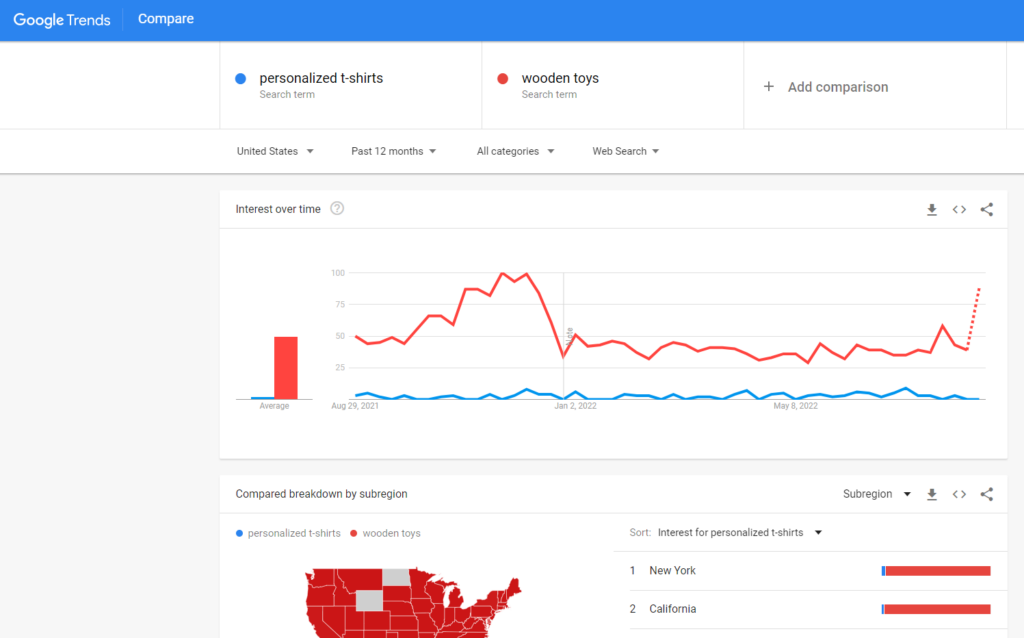
Here, I compared two product categories, “personalized t-shirts” and “wooden toys”, and was surprised with the results. I was expecting personalized t-shirts to be more popular than wooden toys. But the results show the reality!
Therefore, you should never run a business on assumptions. We know “wooden toys” would be the better eCommerce niche for your online store!
These were the trends for the past 12 months. For more precise decisions, we need more data. That’s why I set the duration for the past five years and see what I got.
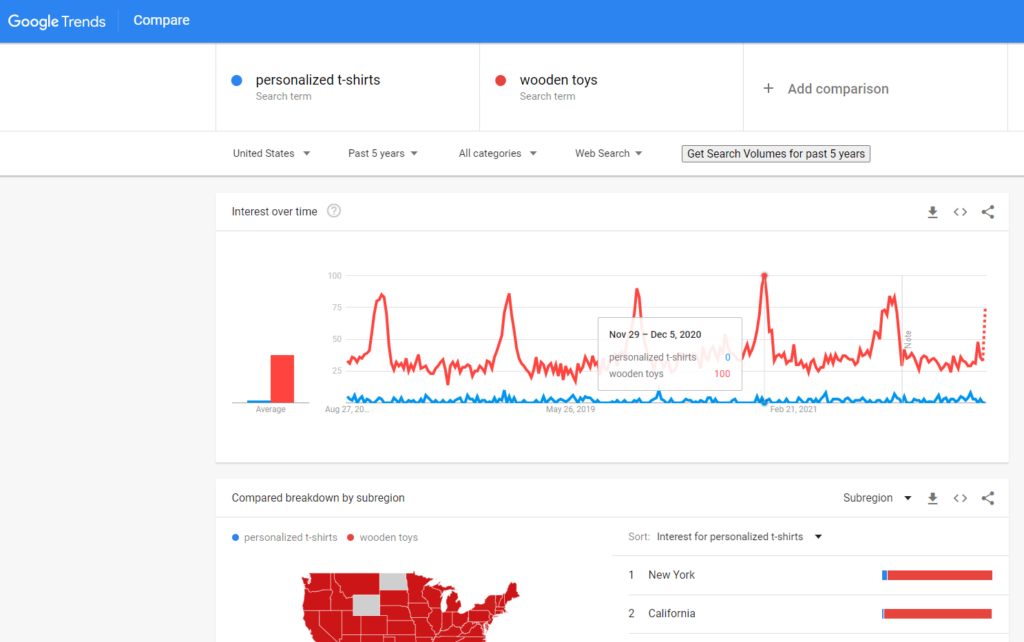
Looking at the steady and growing trend, I found an interesting pattern! Every year the demands for “wooden toys” increase between October and December, i.e., during the Black Friday holiday season. Amazing!!
In short, this is what you need the most if you don’t want to regret choosing a less profitable niche for your eCommerce business.
What’s missing here is the monthly search volume for searched term. You can easily get that from tools like SEMrush, Google keyword planner, and more. These tools will help you in keyword research, and you can find some best keywords (with high search volume and lower difficulty) to reach your target audience and website SEO (Search Engine Optimization).
Let’s move to the next step!
Step 3: Talk to real people
The best way to identify whether the eCommerce niche is profitable or not is to put yourself in real scenarios.
Keyword research, search volume, etc. are good for theory perspective. But they would never tell you the real demands of the products.
If you have any niche in mind, go deep into the industry. Talk to people who are already in the same niche. Know the ongoing challenges with the niche and how they are resolving them. Learn their tactics.
You should also talk with the customers to know their side. For example, if you’re looking to sell handbags, you should start by identifying what women like and don’t like about handbags. Do they want roomy bags or small ones? Should they carry it all day long? Are they looking for a bag that’s fashionable or practical?
Once you have identified these needs and wants of your target audience, find out how much time their lives are really spent on that particular activity. This will give you an idea about how much money they are willing to spend on something like a handbag.
Step 4: Know your audience
To validate your eCommerce niche, you must know your target audience well. Most eCommerce store owners miss this step. As a result, they find it difficult to target online shoppers for their eCommerce stores.
Therefore, you should have a clear idea of who it is you’re selling to and who your target audience is. Even if your eCommerce niche brings competitors to your business, you can compete by getting more specific with your potential customers.

Don’t worry if this is your first time. Here you will learn how to find your audience for your eCommerce niches.
Some of the most common ways to define your potential customers are:
Geographics
It’s crucial to know where your actual shoppers reside. So that you can target them in your future marketing campaigns and ensure you get the most out of it.
If you remember, we got geographic insights while exploring the profitable eCommerce niches on Google trends.
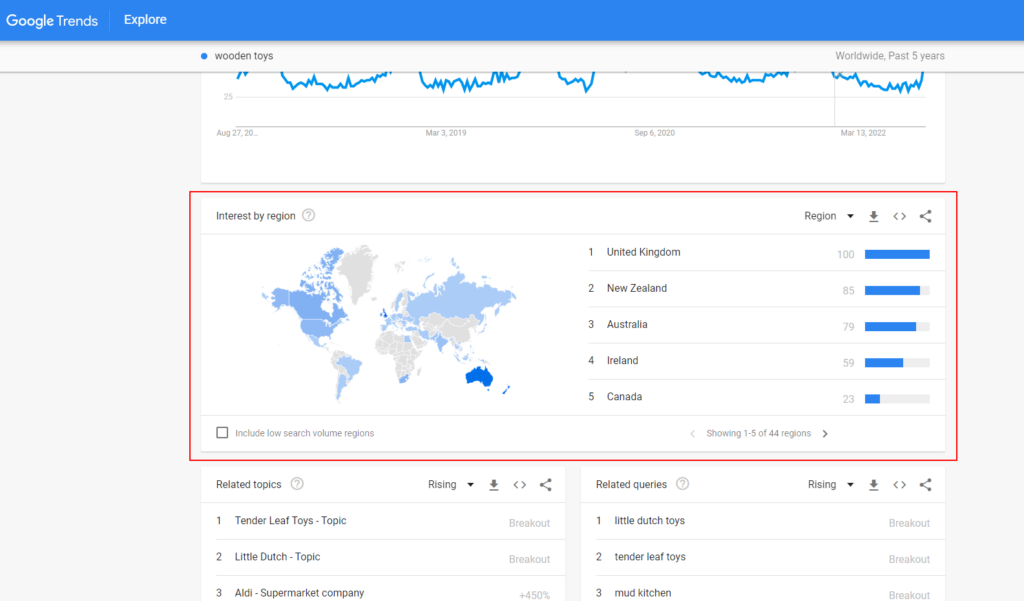
Here you get the target countries, sub-regions, and cities for the niche eCommerce businesses you want.
Demographics
Demographics define your target customers.
As I stated earlier, you cannot run any business on assumptions; you must know who can be your customers for your niche eCommerce business. Let’s make it easy for you.
Fill up the blanks, and you will get closer to your specific audience:
- age: _____________
- gender: _____________
- education: _____________
- income level: _____________
- marital status: _____________
- occupation: _____________
- nationality: _____________
All these characteristics help you build your customer base for your e-commerce niche market.
Psychographics
Psychographic characteristics help you study your potential customers and understand their buying decisions. This includes:
- Interests – hobbies, pastimes, or what occupies someone’s time
- Attitudes & Beliefs – people’s opinions and points of view
- Values – people’s sense of right and wrong
- Lifestyle – people’s day-to-day activities
Some people are fond of pets, which shows their sentiments, interests, and beliefs about animal care. These people can be your potential customers if you sell pet food products. You can also start selling pet owners subscription boxes of food and accessories.
After knowing your customers better, you can opt for a practical test to validate whether the niche eCommerce business would be profitable after the store launch.
Let’s check in on the next step.
Step 5: Run a test campaign
So this is the last step of finalizing the eCommerce niche for your online store.
People often assume that they know the market and jump directly into the business with a little research. They are even don’t aware of whether their idea will work or not in the real world.

Some of those businesses got lucky as people bought their products, and most went towards loss. So to avoid this, you must test your niche products for real-world scenarios before you launch your eCommerce businesses.
So now you may have everything you need for the Test Ad campaign like:
- Niche products
- Target audience
- Target keywords
- Target location
Once you are prepared with the prerequisites, you can run the test campaign. You can start with a small batch of products and run a campaign to ask them for feedback.
When you are developing a new product and going with a unique product line or niche eCommerce business, it’s better to get feedback from the market.
With the feedback or response you get from the audience, I am sure you can make wise decisions!
Quick Recap!
I understand that finding an eCommerce niche for your online business is a difficult task. But with detailed research and proper validation, you can reach your destination.
I hope this guide added value to your process and helped you find the best eCommerce niche for your business.
If you have any questions and need to consult an expert, you can contact us! Our eCommerce experts would love to guide you on your upcoming business or help you resolve your existing business struggles.


